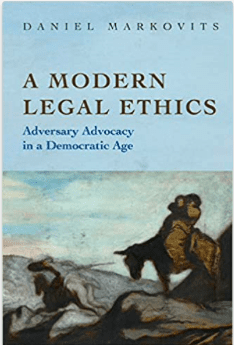FARMERS GROUP, INC. v. GETER, TEX. SUPREME COURT NO. 19-0996, DECIDED APRIL 9, 2021
* * * *
TEXAS MOLD CLAIMS YEARS 2000+ CREATED STATE-WIDE INSURANCE “CRISIS”: A NEARLY FINAL DECISION
MICHAEL SEAN QUINN, Ph.D., J.D., ETC.
Beginning in 2000 the number of mold claims made by Texas homeowners increased sharply. The insurers lost a good deal of money paying these claims and decided to get out of that part of the property insurance business. The Texas Department of Insurance consented to this withdrawal, although the insurance industry didn’t handle it quite right.
Very roughly speaking, the case to be discussed here was filed in 2002 was a class action brought by homeowners claiming that various insurers could not refuse to renew their homeowner’s policies because of having had to pay a huge number of mold claims.
The procedural history of this case was a nightmare for all but a special species of eccentric, litigation- aficionados, insurance-loving coverage lawyers. I shall ignore the procedural details of the case, since it involved many twists and not a few turns, as well as hundreds and hundreds and hundreds of pages filed in courts, not to mention thousands of documents produced in discovery or as appendices to briefs, etc.
In the end, the now nearly 20-year-old case was really an almost simple breach of contract case, and that aspect of it is the only one to be discussed here.
As already indicated in the headline hereto, there was an “avalanche” of mold and other water damage claims starting in around 2000 and a bit before. The insurance companies all operated off the same policy form approved and required by the Texas Department of Insurance. The companies sustained so many losses that they decided to get out of this business using the then approved “all-risk” form. Instead, they began using a “named-peril” form approved by TDI. It did not cover the kind of risks upon which it was losing so much money.
Observers who remember this era may recall that insurers and lots of others believed that many of the claims being made were lacking in merit but that enterprising plaintiff’s lawyers were pursuing a high volume of such claims because they knew (or thought they knew) that homeowners’ insurers would settle a high volume of these small and smallish claims, if for no other reason than the fact that the price of adjustment can be high, as can the cost of litigation, even if the homeowner bears the burden of proof.
Besides, if the companies even reasonably resisted paying such claims in mass, the industry knew that the industry would suffer big-time in the court of public opinion, and it was surely right about this, even if the prevalent claims practices were sloppy and this was part of the problem.
Hence, with TDI approval all the relevant insurers decided to “bail.” In other words, they stopped selling a certain kind of homeowners insurance policy, namely HO-B, to anyone. In response, a class action was filed claiming, among other things, that the insurers were breaching their contracts of insurance with an enormous number of policyholders. It is upon that litigation that this blog shall focus.
(A book should be written about the political and legal history of this case and its sister suit regarding insurer pricing. It was and remains a paradigm of the ironic aphorism that the wheels of justice grind very slowly. Then again, litigation lovers cheer the result and hold the time required a positive testimony to American ideals.
I shall ignore what had happened in the district court and in the court of appeals and shall discuss the decision of the Supreme Court only, even though some of the things said in the lower courts were clever, resourceful, and interesting. (The brief of the insurers and its appendices to the Supreme Court were longer than 150 pages.)
The class-action plaintiff focused on the “Refusal to Renew” section of the policy–Section 6 in the “Conditions” section of the policy.
Section 6a says this: “We may not refuse to renew this policy because of claims for losses resulting from natural causes.”
Section 6d says this in part: “If we refuse to renew this policy, we must deliver to you, or mail to you at your mailing address shown on the declarations page and any mortgagee named in the declarations page, written notice of our refusal to renew not later than the 30th day before the date in which this policy expires…. If we fail to give you proper notice of our decision not to renew, you may require us to renew the policy.”
What happened was that the insurers decided not to renew any of the HO-B policies everywhere in the state.
There were two issues about this in the case under discussion.
The first one was whether Section 6a can be interpreted as follows: “We cannot refuse to renew this policy on the basis of any claim property damages resulting from natural causes where more than one such claim is made under any HO-B policies.” (The exact language set forth here is mine. The same is true as to the emphases.)
If Section 6a is read narrowly and quite literally by itself, Geter’s argument that the policy language was ambiguous is not absurd. Indeed, taking the one sentence out of the context of the whole policy, there might be an ambiguity making the insureds’ position the one that must be adopted. (Often where there ambiguities, the insured triumphs over the insurer. The same should be true, at least in theory, in a class action involving many insureds and several insurers.)
The Supreme Court would have none of it. The Court’s opinion pointed out that when the meaning of form policies are created and/or approved by TDI, the classic ambiguity rule does not apply. Moreover, in interpreting all contracts, including insurance policies, the law (i.e., a court) must look at common usage whenever possible, especially under circumstances like this one. As a matter of common usage, the phrase “this policy” is tied to the language found in the insurance policy before the court and not what has happened with other policies. The word “this” refers to the exact policy ostensibly covering parties to the contract, and not others.
(To put the matter slightly differently, if A is the insured, it will be the exact language to be found in his/her policy that is interpreted, and not the language to be found in a policy issued to B, a person or entity not insured under A’s policy but a different one. Not even the fact that B has a policy nearly identical to that of A is relevant. The phrase “this policy” refers to the contract of insurance issued to A–the one to which A is a party.))
Next, the Court’s opinion took up 6d, the “Required Notice Section.” Roughly the same argument arose. According to the opinion, “Geter argue[d] that Farmers did not give ‘proper notice’ [of its decision not to renew] because its notice cited statewide losses from mold claims which she consider[ed] an impermissible basis for non-renewal.” But, said the Court, this argument depends upon Geter’s having a correct interpretation of Section 6a, which she did not.
Thus, the entirety of this (perhaps) billions of dollars case turns on the meanings of the word “this” considered in the social and economic context of this case.
Hence, the Court reversed the key issue before it. (The Court also remanded the case to the trial court for decision are a different issue, having nothing to do with the insurance issue central to this case.)
In all fairness, it must be said that only lovers of subtle semantics and its connection to contract interpretation can truly appreciate this result. A true “progressive” might be more inclined to see this decision as hinging on sophistry. Then again, aren’t disputes regarding contract law often like this?
Law Office of Michael Sean Quinn
1300 West Lynn, #102
Austin, Texas 78703
(512) 656-0503
mquinn@msqlaw.com





Recent Comments